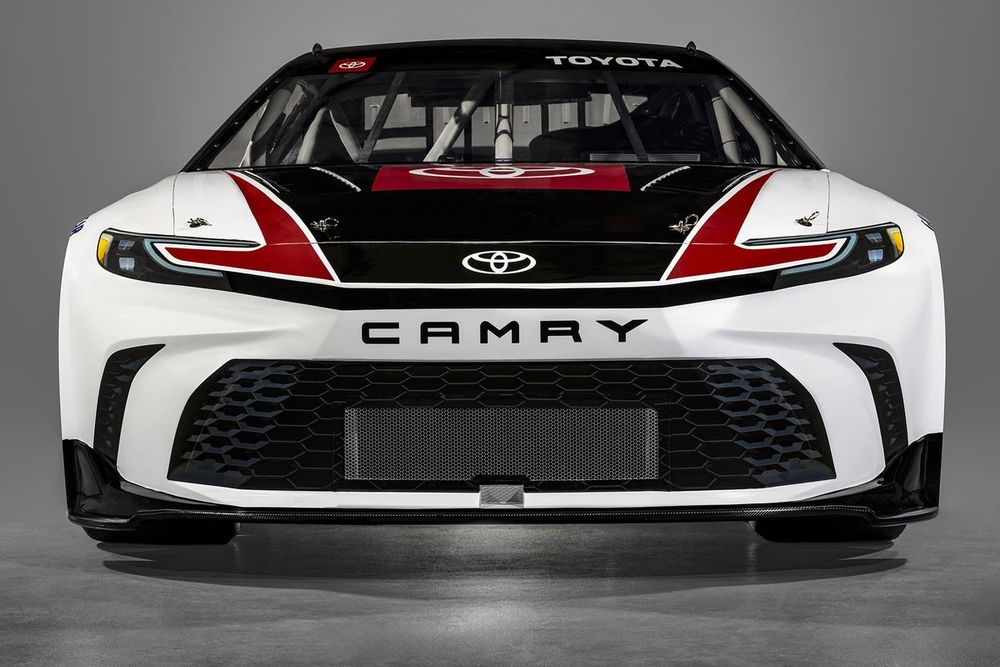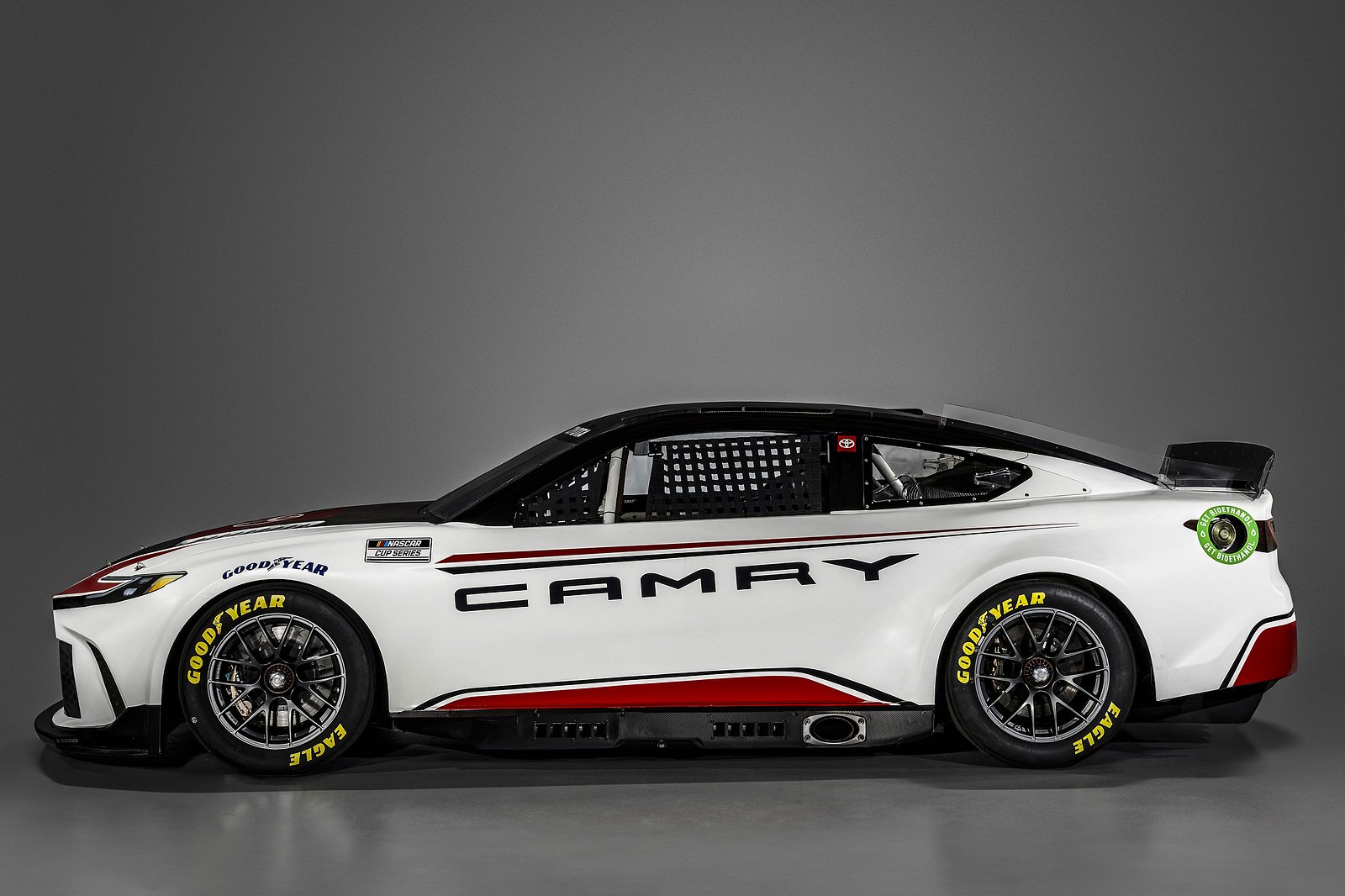This year, both the Ford Mustang and the Toyota Camry have undergone significant facelifts, prompting corresponding redesigns in the NASCAR realm. Capitalizing on these updates, Ford and Toyota have integrated aerodynamic enhancements into their Cup Series counterparts. Ford took a bold stance, introducing sharp and tall fenders to the Mustang’s front end, while Toyota pursued a more balanced approach to optimize aerodynamic efficiency within NASCAR regulations.
The new Toyota Camry XSE Cup car departs from the angular front end of its predecessor, adopting a flatter design reminiscent of the “hammerhead” elements seen in the latest Camry production car. While initially presenting a more subdued appearance, a closer inspection reveals nuanced details aimed at overall improved aerodynamic performance, particularly on drafting tracks like Daytona and Talladega.
Examining the basics, the hood has transitioned to a flatter rectangular shape, featuring narrow hood duct exits strategically moved inward. These duct exits play a crucial role in manipulating airflow, and Toyota has iteratively redesigned them, marking the third variant since the inception of the Next Gen-era NASCAR Camry.

Progressing down the hood towards the front bumper, a distinct flat area housing the “CAMRY” lettering suggests a focus on enhancing drafting capabilities, particularly on superspeedways like Atlanta, Daytona, and Talladega. Toyota aims to leverage these modifications to improve competitiveness on these tracks, acknowledging the prowess of their superspeedway racers like Bubba Wallace and Denny Hamlin.
The lower grille area of the bumper reveals a dual focus on drafting and aerodynamics. Elements from the production car bumper, such as the molded C-shaped corner vents, are optimized for the race car. The stepped bottom of the bumper directs air over the car’s sides, and its K-shaped edge exemplifies a meticulous design to optimize airflow.
Examining the bottom corners of the bumper unveils a notable departure from Toyota’s previous design, resembling a dive plane seen in GT race cars. These ramps are likely intended for controlling front downforce and offer teams more flexibility in car setup and interaction with other aerodynamic components.

Moving down the side of the car, the area above the rocker panels has been flattened, eliminating the small bump ahead of the rear wheel opening. Additionally, the TRD badging has been removed, with the top trim now identified as the XSE. Although the rear of the car sees fewer changes than the front, it achieves a lighter, more sculpted look, aligning with the quarter-panel styling and chamfered bumper corners, mirroring the production car.
Designed in the U.S. by Toyota’s Calty Design Research in California, the 2024 Camry XSE race car showcases meticulous attention to detail, paralleling the new street version of the Toyota Camry. As Paul Doleshal, group manager of motorsports at TMNA, emphasizes, the collaborative efforts of TRD and Calty Design have produced a premier vehicle poised for success on the race track.
In contrast to Ford’s emphasis on intermediate track performance with the latest Mustang, Toyota’s comprehensive approach to the Camry Cup car design incorporates various aerodynamic elements, maximizing efficiency within NASCAR regulations. Given the Camry’s historical competitiveness at intermediate-sized tracks, this strategic approach aims to build on performance strengths at different track styles.
The effectiveness of these design enhancements will be put to the test during pre-season testing at Phoenix Raceway, with the ultimate evaluation taking place at the Daytona 500 in February.

